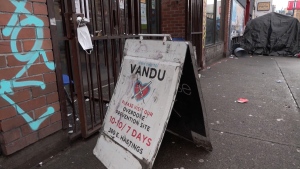It has been eight years since British Columbia declared a public health emergency in response to the ongoing toxic drug crisis. Despite efforts to combat the issue, the crisis continues to rage on.
In 2013, the province declared a state of emergency due to the alarming number of overdose deaths caused by the use of illicit drugs. Since then, the situation has only worsened, with 2020 seeing the highest number of overdose deaths in a single year.
According to the BC Coroners Service, there were 1,716 suspected overdose deaths in 2020, a 74% increase from the previous year. This number is even more devastating when compared to the 211 overdose deaths in 2012, before the public health emergency was declared.
The majority of these deaths are linked to the use of fentanyl, a powerful synthetic opioid that is often mixed with other drugs without the user’s knowledge. This makes it extremely difficult for individuals to know the potency and potential danger of the drugs they are consuming.
Despite the implementation of harm reduction strategies such as supervised consumption sites and the distribution of naloxone kits, the crisis persists. This has led to calls for more comprehensive and effective solutions to address the root causes of drug addiction and overdose deaths.
In response, the provincial government has committed to investing $322 million over the next three years to expand access to treatment and recovery services. This includes the creation of new treatment beds and the expansion of the opioid agonist treatment program.
However, critics argue that more needs to be done to address the underlying issues of poverty, mental health, and trauma that often lead to drug addiction. They also call for a shift towards a harm reduction approach that focuses on reducing the harms associated with drug use rather than solely focusing on abstinence.
As the toxic drug crisis continues to claim lives, it is clear that a multi-faceted and collaborative approach is needed to effectively address this ongoing public health emergency. Only through a combination of harm reduction, treatment, and addressing the root causes of addiction can we hope to see an end to this devastating crisis.




